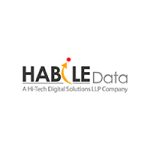Text annotation is crucial for AI and ML development, enabling machines to understand languages. Managing these projects involves challenges like ensuring data quality and consistency. Implementing best practices and adapting to future trends are essential for success.
Text annotation plays a critical role in the development of artificial intelligence (AI) and machine learning (ML) models, serving as the foundation for training algorithms to understand and process human language. By labeling and categorizing text data, annotation helps machines interpret complex linguistic patterns, enabling advancements in natural language processing and other AI applications. No wonder the natural language processing (NLP) market heavily relies on text annotation, and is expected to grow USD 127.2 billion by 2028, demonstrating a CAGR of 37.1% during the forecast period.
However, managing a text annotation project presents several challenges. These include ensuring data quality and consistency, handling large volumes of data efficiently and maintaining clear communication among team members.
Additionally, the subjective nature of language leads to discrepancies in annotations, requiring robust guidelines and quality assurance processes. Addressing these challenges is essential for the successful implementation of AI and ML projects, underscoring the need for best practices and text annotation services in managing these endeavors.
This article explores these practices, offering insights into optimizing project management and enhancing the accuracy of annotated datasets.
Contents
Best Practice 1: Define clear project scope and objectives
Defining a clear project scope and objectives is the cornerstone of a successful text annotation project. It ensures alignment, efficiency, and clarity throughout the project.

Importance of clear project goals: Clear project goals provide a roadmap for the annotation project, guiding decisions and actions. They help prioritize tasks, allocate resources effectively, and prevent scope creep. By establishing specific objectives, teams can focus their efforts on achieving the desired outcomes, ensuring that the project stays on track and meets its intended purpose.
Defining the target audience and use case: Understanding the target audience and use case is crucial for tailoring the annotation process. Knowing who will use the annotated data and for what purpose informs the level of detail required. It ensures that the annotations are relevant and valuable, enhancing the usability and impact of the final dataset.
In one of our recent projects, we annotated text from news articles to enhance the performance of an AI model for a German construction company. We initiated the project by clearly understanding the project scope and objectives of our client.
Identifying the types of text data to be annotated: Selecting the appropriate types of text data is essential for a successful annotation project. This involves determining the data sources and ensuring they are representative of the use case. Identifying the right data helps the teams to annotate information that is most relevant and impactful for the project’s goals. Named entity recognition (NER) remains the most widely used type of text annotation, accounting for approximately 30% of the market share since 2022.
Establishing specific annotation guidelines and schema: Specific annotation guidelines and schema are vital for maintaining consistency across the project. These guidelines serve as a reference for annotators, reducing ambiguity and ensuring uniformity. A well-defined schema helps to categorize data accurately, which is essential for producing reliable and meaningful annotations.
Setting clear quality standards and metrics: Setting clear quality standards and metrics is crucial for evaluating the success of the annotation project. These standards help assess the accuracy and reliability of annotated data. Metrics provide measurable indicators of quality, enabling continuous improvement and accountability, ensuring the final data set meets the project’s objectives.
Defining these elements at the outset empowers project managers to mitigate risks and enhance the overall effectiveness of the text annotation project. This structured approach also ensures that the annotated data is meaningful and actionable and supports the development of robust AI and ML models.
Learn how text annotation empowers NLP to unlock its true potential.
Download our comprehensive guide.»Best Practice 2: Build a high-performing annotation team
Building a high-performing annotation team is essential for the success of a text annotation project. A skilled and cohesive team ensures efficiency, accuracy, and consistency in the annotation process.

- Identifying required skills and expertise: Identifying the necessary skills and expertise is crucial for assembling an effective annotation team. Team members should possess strong language skills, attention to detail and familiarity with the subject matter. This makes it easier for the teams to handle the complexities of the annotation tasks and produce high-quality results. With increasing demand for multilingual AI models, demand for skilled experts is increasing like anything. Multilingual annotation is witnessing significant growth, with an estimated CAGR of 25.5% from 2023 to 2030.
- Selecting and training annotators: Selecting the right annotators involves evaluating candidates based on their skills and experience. Once selected, training is essential for familiarizing them with the annotation guidelines and tools. Proper training ensures that annotators understand the project’s objectives and labels text accurately and efficiently.
- Creating a collaborative work environment: A collaborative work environment fosters teamwork and enhances productivity. Encouraging open communication and mutual support among team members helps resolve challenges quickly. Collaboration also promotes the sharing of insights and best practices, leading to improved annotation quality and project outcomes.
- Implementing effective communication channels: Effective communication channels are vital for coordinating efforts and ensuring alignment within the team. Regular meetings, updates and feedback loops help maintain transparency and address issues promptly. Clear communication minimizes misunderstandings and keeps the team focused on achieving the project’s goals.
- Fostering a culture of quality and continuous improvement: Fostering a culture of quality and continuous improvement encourages team members to strive for excellence. Encouraging feedback and learning from mistakes helps refine processes and enhance performance. This culture ensures that the team consistently delivers high-quality annotations and adapts to evolving project needs.
Building a high-performing annotation team involves careful planning, effective communication, and a commitment to quality. A well-structured team is pivotal to the success of any text annotation project.
Best Practice 3: Leverage advanced annotation tools and technologies
Leveraging advanced annotation tools and technologies is crucial for enhancing the efficiency and quality of text annotation projects. These tools streamline processes, reduce errors and improve overall project outcomes.

- The role of annotation tools in project efficiency: Annotation tools play a vital role in improving project efficiency by automating repetitive tasks and managing large datasets. They provide a structured environment for annotators, enabling them to focus on complex tasks. This leads to faster completion times and higher-quality annotations, thus benefiting the overall project.
- Selecting the right annotation tool for specific needs: Choosing the right annotation tool involves evaluating the project’s specific requirements and constraints. Consider factors such as data types, integration capabilities and user-friendliness. Selecting a tool that aligns with the project’s goals ensures effective utilization and maximizes the tool’s potential benefits. The market for data annotation tools was valued at $1.02 billion in 2023 and is anticipated to grow at a CAGR of 26.3% from 2024 to 2030.
- Utilizing automation features to streamline workflows: Automation features in annotation tools significantly streamline workflows by reducing manual effort. These features include automatic labeling, error detection, and data pre-processing. Leveraging automation enhances productivity, minimizes errors and improves focus on complex annotation tasks.
- Implementing quality control mechanisms within the tool: Quality control mechanisms within annotation tools help maintain high standards by providing real-time feedback and validation. Features such as inter-annotator agreement and error tracking ensure consistency and accuracy. Implementing these mechanisms helps identify issues early and maintain the integrity of the annotated data.
- Exploring emerging technologies for annotation enhancement: Exploring emerging technologies, such as AI-driven annotation and machine learning, enhances the annotation processes. These technologies offer innovative solutions for handling complex data and improving accuracy. Staying updated with technological advancements ensures that projects benefit from the latest tools and methodologies.
Leveraging advanced annotation tools and technologies is essential for optimizing text annotation projects. By selecting the right tools and utilizing their features, annotators achieve greater efficiency and quality.
Best Practice 4: Ensure data quality and consistency
Ensuring data quality and consistency is fundamental to the success of a text annotation project. High-quality datasets directly impact the performance and reliability of your AI and ML models.

- Importance of data quality for model performance: Data quality is crucial for the accuracy and effectiveness of AI and ML models. High-quality annotated data provides a solid foundation for training algorithms, leading to better model predictions. Poor data quality leads to biased or inaccurate models, undermining the project’s overall success.
- Implementing rigorous quality control processes: Rigorous quality control processes are essential for maintaining data integrity throughout the annotation project. These processes involve regular audits, spot checks and feedback loops to identify and correct errors. Consistent quality control ensures that the annotated data meets the project’s standards and requirements.
- Utilizing inter-annotator agreement (IAA) metrics: Inter-annotator agreement (IAA) metrics are valuable for assessing the consistency of annotations across different annotators. High IAA scores indicate that annotators interpret guidelines, similarly, ensuring uniformity. Monitoring the IAA helps identify areas where guidelines may need clarification or improvement.
- Handling inconsistencies and errors effectively: Effectively handling inconsistencies and errors is critical for maintaining data quality. This involves promptly addressing discrepancies and implementing corrective actions. Establishing clear protocols for error resolution helps minimize their impact and maintain the integrity of the dataset.
- Iterative improvement of annotation guidelines: Iterative improvement of annotation guidelines is necessary to adapt to evolving project needs and challenges. Regularly reviewing and updating guidelines based on feedback and performance metrics ensures they remain relevant and effective. Continuous refinement helps in achieving consistent and high-quality annotations.
Ensuring data quality and consistency is vital for the success of text annotation projects. By implementing robust quality control measures and continuously improving guidelines, teams produce reliable and accurate datasets.
Best Practice 5: Effective project management and communication
Effective project management and communication are essential for the successful execution of a text annotation project. They ensure that the project stays on track, within budget and meets its objectives.

- Setting clear project timelines and milestones: Establishing clear project timelines and milestones is crucial for guiding the project’s progress. Timelines provide a structured schedule, while milestones mark significant achievements. This helps in maintaining momentum, ensuring timely delivery and allowing for adjustments when necessary to meet project goals.
- Tracking project progress and performance: Tracking project progress and performance is vital to identify potential issues early. Regular monitoring allows project managers to assess whether the project is on schedule and meets quality standards. This proactive approach helps in making informed decisions and implementing corrective actions.
- Managing project budget and resources: Effective management of the project budget and resources ensures that the project remains financially viable. Allocating resources efficiently and monitoring expenditures prevent overspending and resource shortages. Careful management supports the project’s sustainability and successful completion.
- Effective communication with stakeholders: Maintaining effective communication with stakeholders is key to aligning expectations and addressing concerns. Regular updates and transparent communication foster trust and collaboration. Engaging stakeholders throughout the project ensures their needs are met.
- Documenting project processes and learnings: Documenting project processes and learnings is important for future reference and continuous improvement. Detailed records provide valuable insights into what worked well and what didn’t. This documentation helps refine future projects and build on past successes.
Effective project management and communication are critical for achieving the goals of a text annotation project. By setting clear timelines, managing resources and maintaining open communication, teams can ensure project success.
Conclusion
Managing a text annotation project requires a strategic focus on the above-mentioned five best practices. A holistic approach that integrates these practices is essential for success. As text annotation evolves, future challenges and trends will emerge, including handling larger datasets and integrating AI-driven tools.
Staying informed and adaptable will be crucial for navigating these changes. By embracing these best practices and anticipating future developments, teams can ensure their text annotation projects are both effective and forward-looking. This comprehensive strategy will support the continuous advancement of AI and ML technologies.
Want to elevate your AI models with high-quality text annotation.
Let our experienced annotators handle it for you »
HabileData is a global provider of data management and business process outsourcing solutions, empowering enterprises with over 25 years of industry expertise. Alongside our core offerings - data processing, digitization, and document management - we’re at the forefront of AI enablement services. We support machine learning initiatives through high-quality data annotation, image labeling, and data aggregation, ensuring AI models are trained with precision and scale. From real estate and ITES to retail and Ecommerce, our content reflects real-world knowledge gained from delivering scalable, human-in-the-loop data services to clients worldwide.






